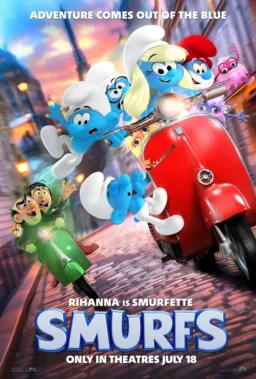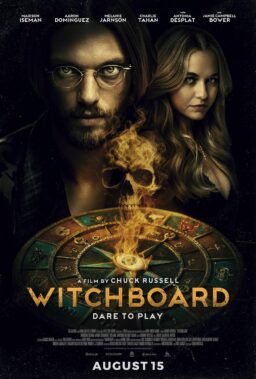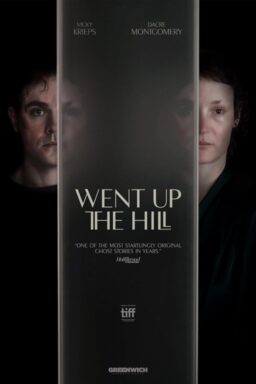During my last days at the Venice Film Festival, I was able
to catch four films that rounded out my total-number-seen of main competition
pictures to eight. A little over one-third of the 21 total, and so, by my
lights, not an exactly representational sampling, but not a bad sampling
either, and I was fortunate in that the four films I went out on were all
outstanding.
I began with “Anomalisa,”
written by Charlie Kaufman and co-directed by Kaufman and Duke Johnson, an
animation veteran. “Anomalisa” is a beautifully rendered stop-motion animation
film, enacted by what look to be computer-graphics-enhanced puppets. In the
initial scenes of this meticulously structured 90-minute film, one is apt to
wonder why it was made in this format. Aside from the fact that maybe Kaufman
is preoccupied with puppets—recall the failed profession of the protagonist of
Spike Jonze’s “Being John Malkovich,” written by Kaufman. In any event, all
becomes clear, at least if you’ve keyed in to the unusual and varied metaphors
the film trucks in. One clue lies in the faces of the characters. Not the eerie
sameness of every face except for that of protagonist Michael Stone (voiced by
David Thewlis), a British business consultant of such popularity that when he
enters the lobby of a Cincinnati hotel conventioneers whisper his name like
he’s a rock star or something. It’s in the way the faces are constructed, in
sections, with foreheads that clamp on the top and leave a smooth line leading
from the middle of each eyeball and around the temple. In Michael’s case, it
makes him look as if he’s maybe wearing wire-rim glasses. And then there is,
yes, the similarity of every other face and of every other voice. Michael’s a
miserable fellow, seemingly unloved by his wife and son in L.A.; looking up an
old lover from his dismally efficient hotel room winds up makes him even more
miserable after they meet in the dismal hotel bar. On his way back to his room,
Michael hears in the hallway a voice that’s very distinct from every other one
he hears. That voice belongs to Lisa, a shy young woman (Jennifer Jason Leigh)
in whom Michael takes a very strong interest. Their tentative liaison grows
into something more furious as Michael charges into Lisa’s heart, and by the
next morning he’s ready to leave his entire life for her, which she can
scarcely believe is true. And as it happens…
Well. This is a movie I went into relatively cold, and I
think it’s the best way to do it. It really is a staggering achievement: the
whole thing is steeped in Kaufman’s sardonic, surreal sense of humor but
there’s a new dimension of seriousness and artistic gravity here, and it’s
because of the way the film’s form is inextricably knotted to its themes. This
is, I suspect, one of those rare Perfect Films, and also a perfectly sad one,
one that’s executed with remarkable conviction by everyone involved, including
third major cast member Tom Noonan, whose role is best not described here. A
landmark picture.

Marco Bellocchio’s “Sangue
del mio Sangue” (“Blood of my Blood”) is a picture I’d like to see again
before I weigh in on it in more detail; I certainly do hope this latest work
from Italian radical turned fecund old master Marco Bellocchio finds
distribution in the U.S. As I said to a colleague after the film was over, “I’m
not sure I got it all, but it was sure fun to sit through.” The first half is
not that much fun, mind you: set in a convent-prison in the town of Bobbio in
what looks to be a pre-Enlightenment period. A young quasi-nobleman named Don
Federico rides into town, seeking a “proper” Catholic burial for his twin, who
is said to have committed suicide. The young woman who is said to have
“bewitched” his brother is being put to “the question” by local priests. The
church’s barbaric practices aren’t explicitly depicted, but they register
strongly, and the episode has a disturbing conclusion. Then the action cuts to
present-day Bobbio, where the convent-prison, in a state of disrepair, is being
considered for purchase by a Russian billionaire. Only problem is the vampire
who lives there. Who also happens to run the town. Yes, you read that right.
Cheeky, whimsical, and movingly elegiac, it’s a movie that’s likely more
immediately pertinent to Italians and particularly Italian Catholics, but that
ought not circumscribe its availability.

My roll of first-rate cinema continued with Jerzy
Skolimowski’s “11 Minutes.”
Skolimowski’s a Polish filmmaker who came to the west around the same time as
his compatriot Roman Polanski. (Skolimowski co-wrote Polanski’s brilliant
“Knife In the Water.”) His London-set film “Deep End,” from 1970 is one of the
last, and most disturbing, pieces of “mod”-influenced English language cinema.
Skolimowski’s U.S. and Europe career is full of great stuff (“The Shout,”
anyone?) but wasn’t nearly as high-profile as Polanski’s, and he actually went
17 years without a directing credit. He came back oddly, and strongly, with
2008’s “Four Nights With Anna,” followed that with the underseen, galvanizing
“Essential Killing”…and with “11 Minutes” he delivers a work of such intensity
and energy that it’s startling to consider that the director is in his mid-70s.
It is a multi-character story running on different tracks covering the titular
11 minutes in Warsaw. Characters include a sexist Hollywood sleaze, a coked-up
courier, a professor turned hot-dog vendor…and a dog, whose point of view the
camera frequently adopts. The soundtrack is dominated by ominous drones and
buzzes, and while the fates-colliding-over-a-small-period-of-time film is a
fairly common one these days, trust me, you’ve never seen one like this. It’s a
virtuoso stress monster of a movie.

I left the fest on a very emotional note: Multimedia artist
Laurie Anderson’s brief but exceptionally potent “Heart of a Dog,” in part an extended anecdote about the life and
death of her beloved rat terrier Lolabelle. Like another competition film, Sokurov’s
“Francofonia,” this is an essay film, and it extends its reach into philosophy
and religion and ideas about language and sleep and love and…death. “The
purpose of death is the release of love,” Anderson muses at one point. I could
write a whole essay about the way Anderson uses her light, scintillating voice
in this movie; she begins each section speaking in that formal, sort of
sing-songy way that’s kind of her trademark, but as the text stretches out she
deliberately lets the voice out, turns it more confiding, and this is always in
conjunction with where the text is going. Her incredible control of the
artistic arsenal this medium provides her with—images, music, sound,
language—enable her to construct a work that’s both highly intellectually engaging
and provocative and also emotionally wrecking. I was crying frequently during
the last five minutes and I didn’t care who knew it. In the film Anderson talks
about how in her study of Buddhism she found a directive that one should
practice feeling sad without being sad. Her film could be said to be
a tool for that practice: one feels sad experiencing it, but it’s so wonderful
one simply can’t be sad that it’s in
the world.
I wouldn’t mind a bit if it took the Golden Lion. But we
won’t know what wins until this weekend. After that, I’ll chime in with some
final thoughts and talk about my experience of the three films in the Biennale
College.












